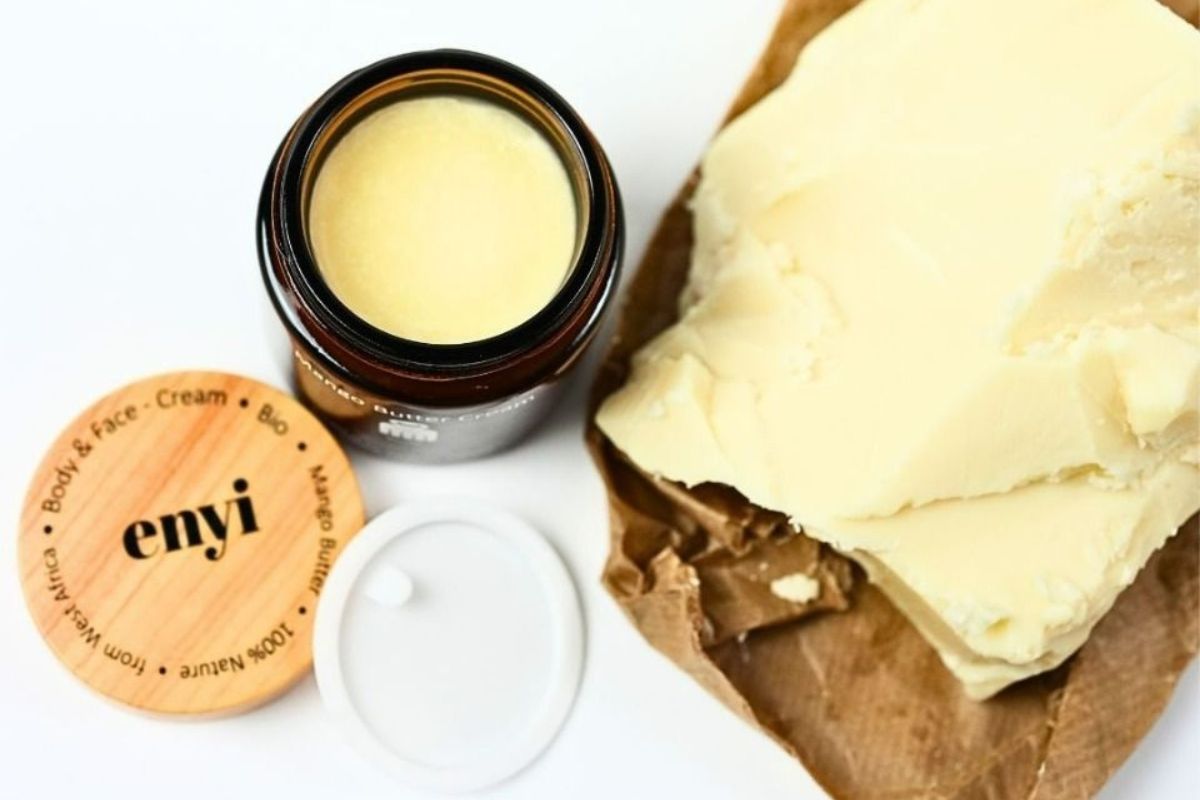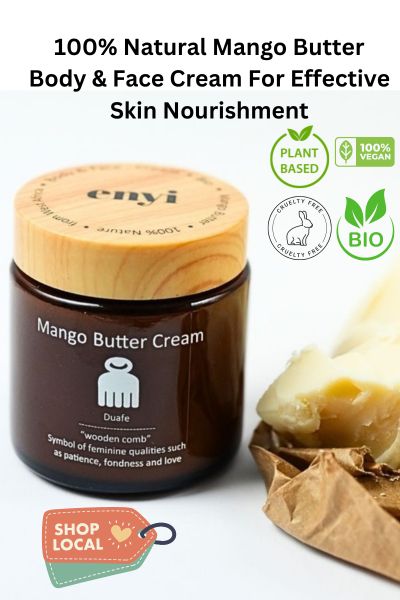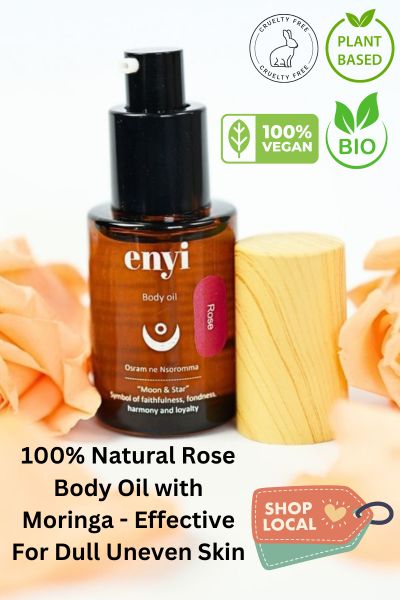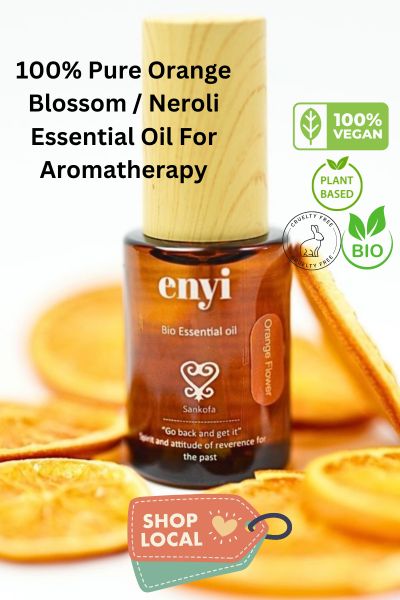We think so: Good cosmetics should provide care and be free from substances that can harm people and the environment. We give you tips on what to look out for when shopping.
Cosmetic products such as creams, shampoos and lotions can be found in almost every bathroom. They are designed to care for skin and hair. The problem is that many contain substances that are harmful to health or have a negative impact on the environment.
New jars and tubes emerge weekly – showcasing inventive lotions, consistencies, or scents pledging marvels. Yet, most producers obscure the shadowy aspect of reality from consumers: potential hazards and side effects. In the direst scenario, that recent lipstick confidently added to our cart may harbor carcinogenic risks, of which the consumer remains oblivious. Perilous beauty products, a not infrequent occurrence even amidst the era of organic and natural cosmetics.
COSMETICS HAZARDS: ARE MANUFACTURERS OBLIVIOUS TO THE BOOMING FRENZY?
In recent times, the fervor surrounding cosmetics, makeup, and overall beauty has exponentially burgeoned. Fresh items consistently grace the shelves. People yearn to experiment with more, accumulating in their drawers. They unwaveringly trust brand images and product assurances. Yet, consumers routinely overlook a crucial aspect: their well-being. Countless products – whether in creams or mascaras – encompass toxic elements capable of causing illness. A wealth of additional information is imperative in this domain.

MAKEUP FOR YOUNGSTERS
Early exposure to toy makeup raises concerns: carcinogenic pigments or harmful heavy metals are concealed in children’s makeup. Primarily manufactured in China, these products share production facilities with items like wall paints, often featuring questionable ingredients unauthorized in Germany. China serves as a major marketplace for inexpensive makeup, giving rise to hazardous cosmetics, constituting a billion-dollar industry seemingly running amok.
COSMETICS OVERSIGHT PARALLELS FOOD REGULATION
Cosmetic oversight falls under the jurisdiction of the same agencies as food. Inspectors focus on products drawing attention, especially those suspected of posing risks by consumer protection agencies. Children’s makeup, even distributed alongside children’s magazines, frequently undergoes scrutiny.
Testing occurs in Europe for example mostly at the State Investigation Office, where cosmetics, containing over 10,000 ingredients (with 1400 banned), face examination. However, only a fraction can be tested due to limited resources. Although banned pigments are regularly discovered, they persistently reappear. Persistent complaints, disclosures, and communication efforts have curbed their prevalence in recent years. Nonetheless, carcinogenic substances surface in random samples with no repercussions for manufacturers, allowing these products to persist in the market.
DANGERS OF CHEAP PRODUCTS
Particularly concerning lip gloss and lipstick, ingestion through lip licking poses a swift route for toxins to enter the body, especially perilous for children. Numerous products carry warnings like “Avoid eye contact. Remove promptly if allergies arise. Not for sensitive skin. Not a toy.” Despite such warnings, new enticing children’s offerings emerge daily, considering that many children cannot yet read.
Parents should scrutinize children’s makeup closely, and it’s advisable to inspect ingredients in personal cosmetic items. Chinese factories, producing adult cosmetics at slashed prices, utilize various chemicals to enhance the longevity of red lipstick. Light protection filters and plastic components mimic hormones, potentially causing infertility and even cancer. Some banned chemicals in Europe are still permitted due to causing only allergies, readily available in Germany, from budget drugstores to high-end sectors, all within legal limits.
A growing predicament arises as more individuals resort to purchasing hazardous cosmetics online, including corrosive skin peelings. Manufacturer information is often absent, leaving consumer protection powerless.
KEEP AN EYE OUT FOR SUN PROTECTION
It’s not only in cosmetics and skincare that one must give heightened attention to ingredients; caution is also necessary in hair coloring and sun protection items. Products containing chemical light protection filters have long faced suspicion of harboring carcinogenic and hormone-mimicking effects. Consequently, many consumers are now gravitating towards mineral filters, despite their challenges in application and tendency to leave a visible film on the skin. Despite these drawbacks, they generally assure healthier sun protection. Nevertheless, achieving high sun protection factors proves challenging, with anything surpassing SPF 20 posing difficulties. This compels the inclusion of chemical filters alongside mineral ones, even in ostensibly mineral products, often without clear communication to consumers.
ORGANIC BEAUTY – NOT ALWAYS NATURAL
Assuming that opting for organic makeup guarantees safety is a misconception.Numerous self-proclaimed natural cosmetics manufacturers fail to meet the necessary standards, leading to frequent allergic skin responses. It’s crucial to realize that the term “natural cosmetics” lacks legal regulation. Each manufacturer can establish individual guidelines and obtain certifications, complicating the search for truly superior, well-tolerated natural products. Major brand manufacturers often introduce seemingly natural organic lines, falsely implying adherence to genuine natural cosmetic standards, which consumers tend to believe.
Broadly, two categories exist: Natural cosmetics and near-natural cosmetics. Natural cosmetics are predominantly conventionally produced, with only a few ingredients being organic. Authentic natural cosmetics exclusively incorporate natural substances.

UNCERTAINTY AMIDST THE SEAL JUNGLE
High ratings from Öko-Test appear to boost sales significantly, leading to frequent imitation of these endorsements and seals. The market for organic and eco-labels is thriving, with budget-friendly ranges at certain drugstore chains featuring brands that project a green image, claiming pure natural products. Some items even bear multiple seals, further adding to the confusion.
ADVICE FROM THE CONSUMER PROTECTION AGENCY
How do I recognise which ingredients are really in a lipstick? On the small packaging, you can initially see that there are lists of ingredients. However, on lipsticks, these can only be read on the second layer of a sticker and in tiny letters. The associations advise: Anyone who has a problem should be tested for allergies by a dermatologist. If you know which ingredients are problematic, you should shop accordingly. Consumers must therefore know for themselves what is harmful to them – and therefore also know the exact terms and names (e.g. of colourants): In the following we give a short overview:
Harmful Components in Cosmetics: Understanding the Risks
Our daily use of cosmetics for skin, hair, and nails may conceal potential threats. Numerous ingredients face criticism in product tests due to their alleged or proven harm to our bodies, often through carcinogenic or hormonal effects. Beyond familiar substances like aluminum in deodorants, unfamiliar terms like MOSH and PEG derivatives surface. We shed light on which ingredients to avoid and the names under which they appear on packaging.

Aluminum
Aluminum, a lightweight metal, has long raised concerns about its impact on health. The German Federal Ministry for Risk Assessment (BfR) warns of potential negative effects on the nervous system, kidneys, and bones with excessive aluminum levels in the body. High exposure during pregnancy may even impair the child’s development. The recommended limit for adults is not exceeding one milligram of aluminum per kilogram of body weight per week.
Aluminum absorption occurs through drinking water, food, food packaging, toothpaste with whitening effects, lipstick, and sun cream. In deodorants with antiperspirant properties, aluminum salts block sweat flow and odor formation. While previous limited data associated them with serious illnesses, such as breast cancer and Alzheimer’s disease, these links lack scientific confirmation. The BfR currently deems it unlikely that aluminum-containing deodorants pose health risks, even with daily use.
Ingredients under names like Aluminum chlorohydrate and Aluminum chloride are noteworthy in this context.
Microplastics: Environmental Impact of Minute Particles
Microplastics, plastic fragments under five millimeters in size, play various roles in cosmetics. Utilized as exfoliating particles, fillers, and film formers in products like lipsticks, concealers, eye shadows, and skincare creams, these particles have an adverse environmental impact. While toothpaste in Germany has been considered microplastic-free for years, they persist in other products.
Beyond cosmetics, microplastics arise from car tire and shoe sole abrasion and synthetic fibers like fleece, releasing particles during washing. Weather-related decomposition of larger plastic items also generates secondary microplastics. Entering the environment through sewage sludge, microplastics accumulate in soil and water, reaching every ocean globally. Removal is virtually impossible, and these particles can release toxic substances, entering the food chain and potentially harming animals and plants. A US study even detected microplastics in the air. The WWF warns of a significant impact on the planet’s biosphere, though the potential danger to humans remains unclear.
Among designated ingredients are Acrylates crosspolymer, acrylates copolymer, polyethylene, polypropylene, polyurethane, nylon-12, nylon-6, and polystyrene.
Mineral Oils (MOSH, MOAH):
Criticism Surrounding Advent Calendars
Advent calendars filled with chocolate often face scrutiny for mineral oil content.
- In cosmetics, mineral oils, termed paraffin or Vaseline, serve as film formers, emollients, or skin protectors in lotions, creams, and makeup. EU regulations mandate purification to ensure no adverse health effects. The BfR currently deems skin absorption unlikely to pose a risk. Lip care products, absorbed through the mouth, face stricter recommendations for manufacturers.
- In food, criticized mineral oil components include saturated hydrocarbons (MOSH) and aromatic hydrocarbons (MOAH). These may transfer from newspaper printing inks or recycled cardboard boxes. Contamination by lubricants or machine exhaust is also possible. No conclusive studies assess health risks from MOSH or MOAH components in food, but animal experiments reveal MOSH causing deposits and inflammation in rats’ livers. MOAH, a mixture, may include carcinogenic substances.
Ingredient Designations Include:
Paraffinum liquidum, paraffin, cera microcristallina, petrolatum, isoparaffin, ceresin. Parabens exhibit antibacterial properties, serving as preservatives in lotions, deodorants, and (sun) creams to prolong shelf life. Controversial due to hormonal activity in animal experiments, the BfR imposes a 0.19% maximum concentration for butyl and propyl parabens, while methyl and ethyl parabens should not exceed 0.4%. Some parabens are outright banned. Despite higher allergy potential in alternative preservatives, the BfR discourages a general paraben replacement in cosmetics, deeming products with parabens safe for children.
Earlier studies found parabens in breast cancer tumors, though their involvement in development remains unproven. Recent studies suggest pregnant women, in particular, should avoid paraben cosmetics. Offspring of participants with elevated butylparaben concentrations tended to be overweight, supported by rat experiments. Conversely, parabens may worsen endometriosis symptoms. Ingredients include Methylparaben, ethylparaben, propylparaben, and butylparaben.
PEG, denoting polyethylene glycol, and its derivatives function as emulsifiers in cosmetics, ensuring seamless blending of various substances in creams and lotions. In products like toothpaste, shower gel, and shampoo, PEG serves as a surfactant, inducing foaming. The food industry employs PEG as carriers for powders, tablets, or coated tablets. Criticism of PEG/PEG derivatives in cosmetics arises due to their purported enhancement of skin permeability to active ingredients and harmful substances, posing risks for those with sensitive skin or allergies. Despite such concerns, “Ärzteblatt” notes PEG hypersensitivity as “very rare” based on various studies. WHO guidelines recommend a daily dose of 10 milligrams per kilogram of body weight in foods and medicines.
An additional critique targets PEG/PEG derivatives as petroleum-derived, challenging environmental breakdown above a specific molecular mass and categorizing them as potential microplastics. Key ingredient names include Polyethylene glycol, PEG, and PEG in combination with a number (e.g., PEG-100). For foodstuffs, the designation is E 1521.
Silicones
Renowned for Glossy Hair and Smooth Skin
Silicones, versatile polymers in cosmetics, are prized for being water-repellent, non-greasy, and capable of forming a protective film, offering shine while imparting smoothness to hair and skin. Their low reactivity deems them well-tolerated for allergies. Silicone oils, like dimethicone, serve as defoamers, addressing issues like intestinal gas build-up. Criticisms often focus on their film-forming effect, accused of sealing the skin optically without contributing to skin regeneration or moisturization, according to Deutsche Apothekerzeitung. However, silicones are generally considered non-harmful, with D4 and D5 compounds, deemed hazardous, banned in wash-off cosmetic products since 2020. Concerns about environmental impact arise due to their release into wastewater and challenges in breakdown through sewage treatment plants.
Key ingredient names include Dimethicone, Dimethiconol, Cyclopentasiloxane, Phenyl Trimethicone, Amodimethicone, Polysiloxane, and Cyclomethicone.

UV Filters: Varied Mechanisms in Sunscreen Protection
Sun creams and sprays employ two main types of UV filters: mineral filters (physical), such as titanium dioxide and zinc oxide, create a barrier on the skin, absorbing and reflecting radiation. Chemical-organic UV filters penetrate the skin, absorbing UV rays and converting them into heat. Often, a combination of both filter types is utilized.
In the European Union, UV filter substances undergo safety assessments to determine acceptable maximum concentrations. The BfR affirms that, based on current scientific knowledge, no adverse health effects are expected from the 30 authorized UV filters. However, certain filters face scrutiny in product tests. Nanoparticles of titanium dioxide or zinc oxide in physical UV filters raise concerns about potential skin penetration, accumulation, and harm. The EU Commission SCCS suggests this is unlikely in healthy, intact skin, advising specialists for allergy sufferers, acne, and neurodermatitis patients. Some chemical UV filters, like octocrylene and homosalate, are suspected of hormone-like effects. Octocrylene is spotlighted for potential benzophenone formation in older sunscreens, prompting discontinuation after 12 months. Key ingredients include Titanium Dioxide, Zinc Oxide, Octocrylene, Benzophenone (+ number), Homosalate, Octyl Methoxycinnamate, Ethylhexyl Salicylate, and Diethylhexyl Butamido Triazone.

























